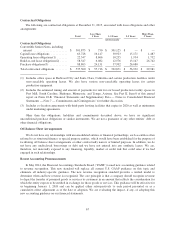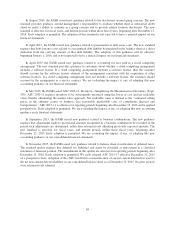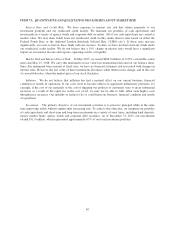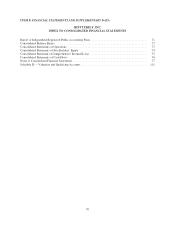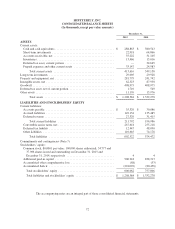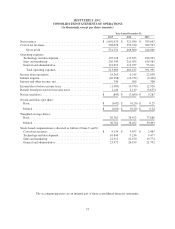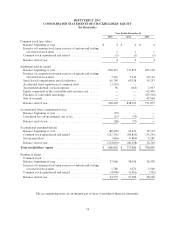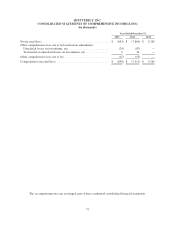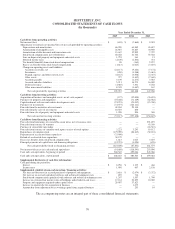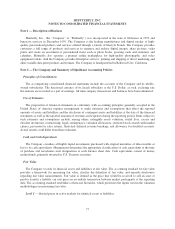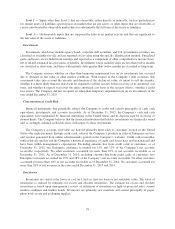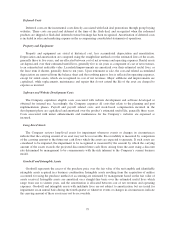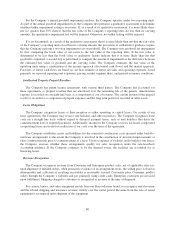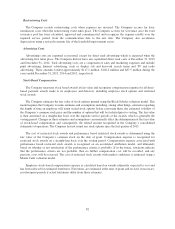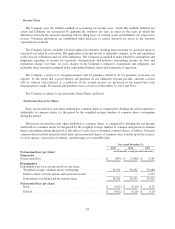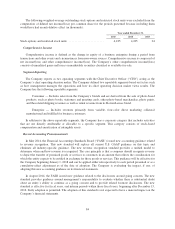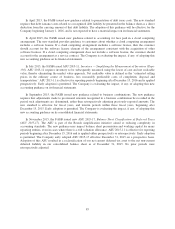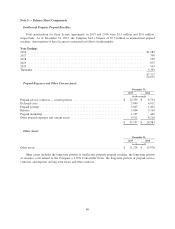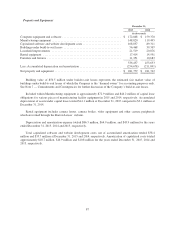Shutterfly 2015 Annual Report Download - page 79
Download and view the complete annual report
Please find page 79 of the 2015 Shutterfly annual report below. You can navigate through the pages in the report by either clicking on the pages listed below, or by using the keyword search tool below to find specific information within the annual report.SHUTTERFLY, INC.
NOTES TO CONSOLIDATED FINANCIAL STATEMENTS
Note 1 — Description of Business
Shutterfly, Inc., (the “Company” or “Shutterfly”) was incorporated in the state of Delaware in 1999 and
began its services in December 1999. The Company is the leading manufacturer and digital retailer of high-
quality personalized products and services offered through a family of lifestyle brands. The Company provides
customers a full range of products and services to organize and archive digital images; share pictures; order
prints and create an assortment of personalized items such as photo books, greeting cards and stationery and
calendars. Shutterfly also operates a premier online marketplace for high-quality photographic and video
equipment rentals. And the Company provides Enterprise services: printing and shipping of direct marketing and
other variable data print products and formats. The Company is headquartered in Redwood City, California.
Note 2 — The Company and Summary of Significant Accounting Policies
Principles of Consolidation
The accompanying consolidated financial statements include the accounts of the Company and its wholly-
owned subsidiaries. The functional currency of its Israeli subsidiary is the U.S. Dollar, as such, exchange rate
fluctuations are recorded as a part of earnings. All intercompany transactions and balances have been eliminated.
Use of Estimates
The preparation of financial statements in conformity with accounting principles generally accepted in the
United States of America requires management to make estimates and assumptions that affect the reported
amounts of assets and liabilities and the disclosure of contingent assets and liabilities at the date of the financial
statements as well as the reported amounts of revenues and expenses during the reporting period. Items subject to
such estimates and assumptions include, among others, intangible assets valuation, useful lives, excess and
obsolete inventories, restructuring, legal contingencies, valuation allowances, restricted stock awards with market
criteria, provision for sales returns, flash deal deferred revenue breakage, and allowance for doubtful accounts.
Actual results could differ from these estimates.
Cash and Cash Equivalents
The Company considers all highly liquid investments purchased with original maturities of three months or
less to be cash equivalents. Management determines the appropriate classification of cash equivalents at the time
of purchase and reevaluates such designations at each balance sheet date. Cash equivalents consist of money
market funds, primarily invested in U.S. Treasury securities.
Fair Value
The Company records its financial assets and liabilities at fair value. The accounting standard for fair value
provides a framework for measuring fair value, clarifies the definition of fair value, and expands disclosures
regarding fair value measurements. Fair value is defined as the price that would be received to sell an asset or
paid to transfer a liability (an exit price) in an orderly transaction between market participants at the reporting
date. The accounting standard establishes a three-tier hierarchy, which prioritizes the inputs used in the valuation
methodologies in measuring fair value:
Level 1 — Quoted prices in active markets for identical assets or liabilities.
77


